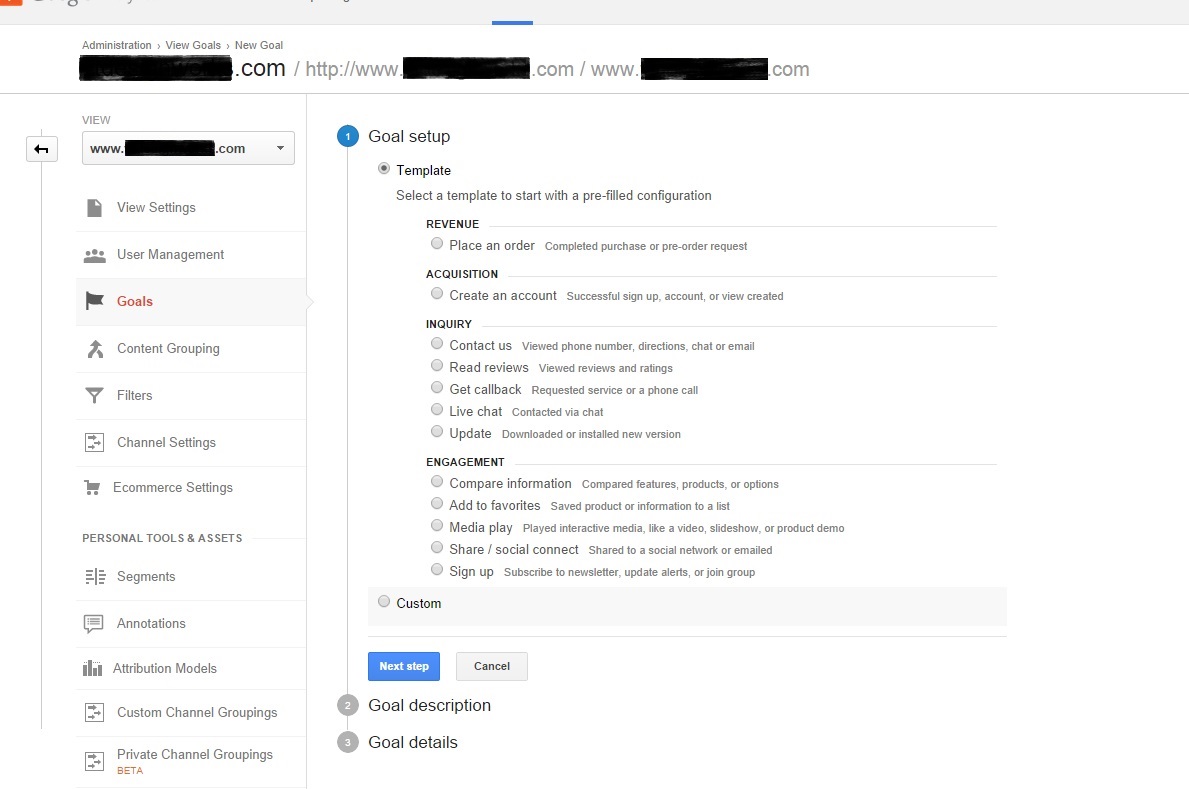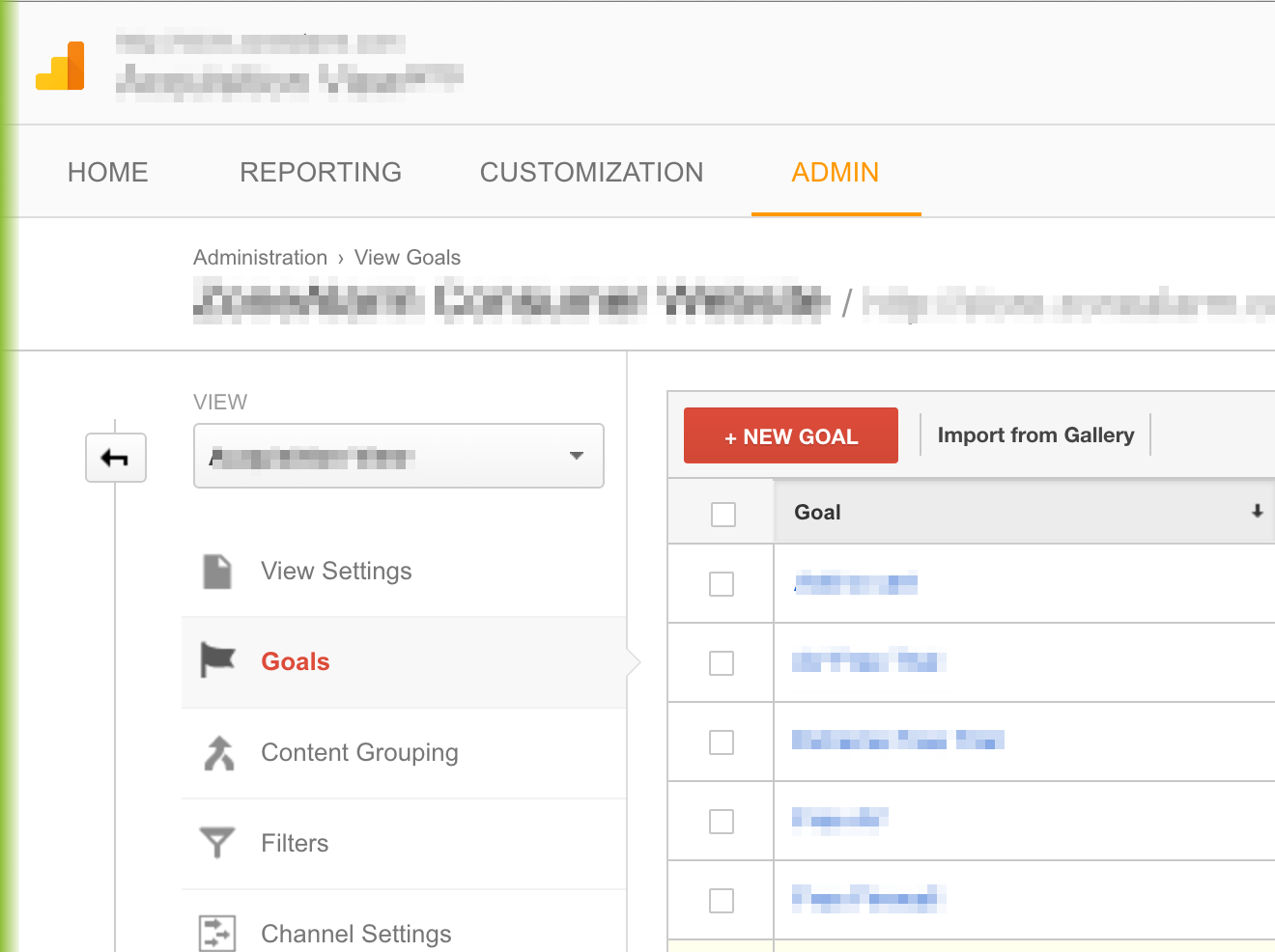Find Out What Data Is Google Analytics Goals Unable to Track
Find Out What Data Is Google Analytics Goals Unable to Track
Blog Article
Debunking Google Analytics Limitations: Discover What Data Goals Can not Track
In the realm of electronic analytics, Google Analytics stands as a powerful device that provides beneficial insights into internet site performance and individual behavior. From the complexities of customer interaction with vibrant web content to the complexities of cross-device customer trips, these limitations dropped light on locations that may stay covered from traditional analytics point of views.

Individual Communication With Dynamic Content
Customer interaction with dynamic material plays a crucial function in recognizing user habits on internet sites and optimizing the general customer experience. Dynamic web content refers to elements on a web page that can transform without the need for a full web page reload. This consists of interactive components such as pop-ups, sliders, forms, and videos that respond to customer actions in real-time. By tracking individual communications with vibrant content, site owners can get valuable understandings into individual involvement, preferences, and actions.
Google Analytics offers various devices to track customer communications with dynamic content, such as event monitoring and digital pageviews. Event tracking allows you to keep track of specific customer actions, like clicking a switch or enjoying a video, offering information on just how individuals communicate with vibrant aspects. Online pageviews can be used to track communications that do not cause a new web page tons, offering an extensive sight of individual interaction with dynamic web content. By examining this data, internet site proprietors can make informed decisions to boost individual experience and drive conversions.
Cross-Device Individual Journeys
How can modern-day analytics tools track the complicated courses users take across several devices in their on the internet trips? Cross-device user journeys offer a substantial challenge for tracking and evaluating individual actions properly. As individuals engage with internet sites or applications utilizing different tools such as desktops, mobile phones, and tablet computers, it becomes critical to understand how they move between these platforms to maximize individual experience properly.
Google Analytics faces restrictions in tracking cross-device user trips as a result of privacy problems and technical restrictions - what data is google analytics goals unable to track. While it can supply understandings into individual tools' interactions, tracking a seamless individual trip throughout several devices continues to be a difficulty. This restriction can lead to incomplete data and fragmented individual insights, making it challenging for businesses to produce a unified view of the client journey
To address this issue, organizations can make use of sophisticated analytics devices that provide cross-device tracking capacities, allowing them to acquire a more alternative understanding of customer habits. By leveraging these tools, organizations can bridge the void in tracking cross-device user journeys and enhance their digital approaches for a smooth customer experience.
Offline Conversions and Attribution
As companies navigate the obstacles of tracking cross-device individual trips, one more critical aspect to think about is the world of offline conversions and attribution in the world of data analytics. While Google Analytics supplies beneficial insights into online user habits, it fails when it involves tracking conversions that happen offline. This constraint positions a significant difficulty for companies that have both online and offline sales networks.
Offline conversions, such as purchases made in physical stores or via phone call facilities, are vital to understanding the total consumer trip. Without the ability to associate these offline conversions to specific on-line interactions, businesses may battle to accurately determine the influence of their digital advertising initiatives.
To address this space, organizations can explore alternate remedies such as integrating CRM systems with on-line analytics tools or using one-of-a-kind coupon codes that can be traced back to on the internet campaigns. By connecting the void in between online and offline data, companies can get an extra comprehensive understanding of their customers' habits and enhance their total advertising and marketing strategies.
Individual Individual Recognition
In the world of data analytics, the ability to properly identify individual users across different online touchpoints is a crucial challenge for companies seeking to personalize and optimize their marketing techniques. While Google Analytics offers important insights into user behavior and communications, it drops brief in allowing the recognition of certain individuals because of privacy issues and technical restrictions. Google Analytics utilizes special identifiers such as cookies to track individual sessions and behavior, but these do not equate to recognizing specific customers in an individual feeling.

Data From Secure Pages
In spite of the raising frequency of safe web pages on web sites, acquiring information from these encrypted resources provides a distinct difficulty for electronic analytics systems like Google Analytics. Protect web pages, suggested by HTTPS in the URL, encrypt data traded between the user's web browser and the web site's web server to guarantee personal privacy and safety. While this encryption is essential for shielding delicate details, it likewise positions constraints for tracking customer actions and celebration analytics data.
Google Analytics faces barriers in gathering comprehensive info from secure pages as a result of the encryption procedures in position. Because of this, specific information factors such as referral resources, keyword searches, and also some user communications might not be totally caught when customers access a web site through a safe connection. This constraint can influence the precision and efficiency of the data analysis, resulting in spaces in recognizing customer actions and choices on safe web pages.
To browse this challenge, electronic experts might require to discover different monitoring techniques or utilize various other devices particularly created to collect insights from safe pages. By adapting approaches to suit these limitations, companies can still derive important analytics regardless of the restraints offered by encrypted links.
Final Thought
In final thought, Google Analytics has limitations in tracking user communication with vibrant material, cross-device user journeys, offline conversions, individual user recognition, and data from safe and secure pages. Regardless of its useful insights, Google Analytics may not provide a full photo of customer involvement across different touchpoints.
Individual communication site here with dynamic web content plays a critical function in understanding individual habits on websites and enhancing the total user experience. By tracking individual communications with dynamic content, he has a good point internet site owners can acquire beneficial insights into customer engagement, preferences, and actions.
Google Analytics uses distinct identifiers such as cookies to track individual sessions and actions, but these do not correspond to recognizing individual customers in an individual sense.
As a result, particular data points such as recommendation resources, keyword searches, and even some individual communications might not be fully caught when users access a web site via a protected link.In conclusion, Google Analytics has constraints in tracking user interaction with vibrant material, cross-device customer trips, offline conversions, private customer recognition, and data from secure pages.
Report this page